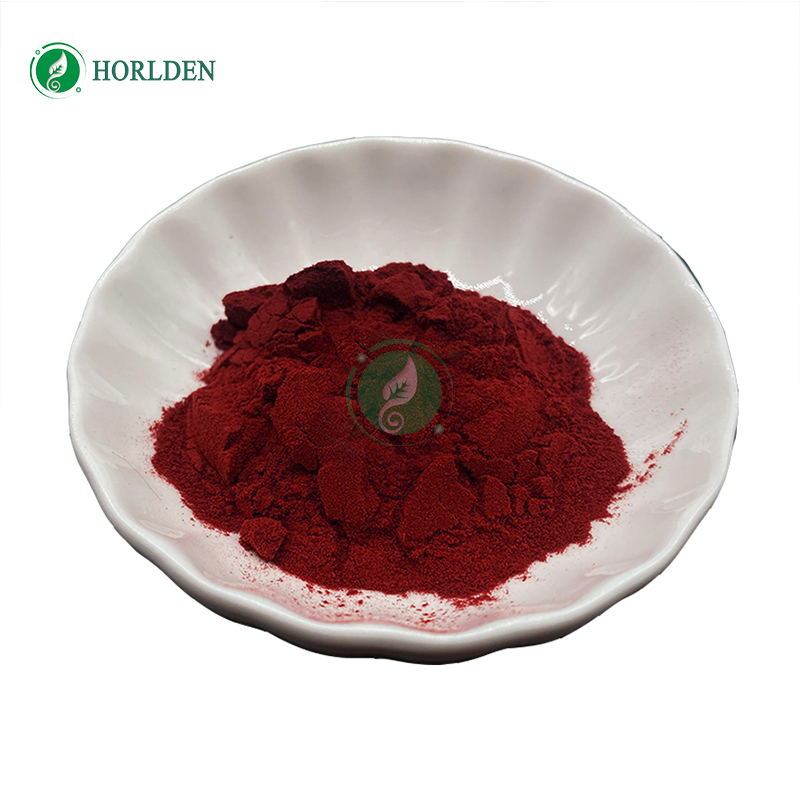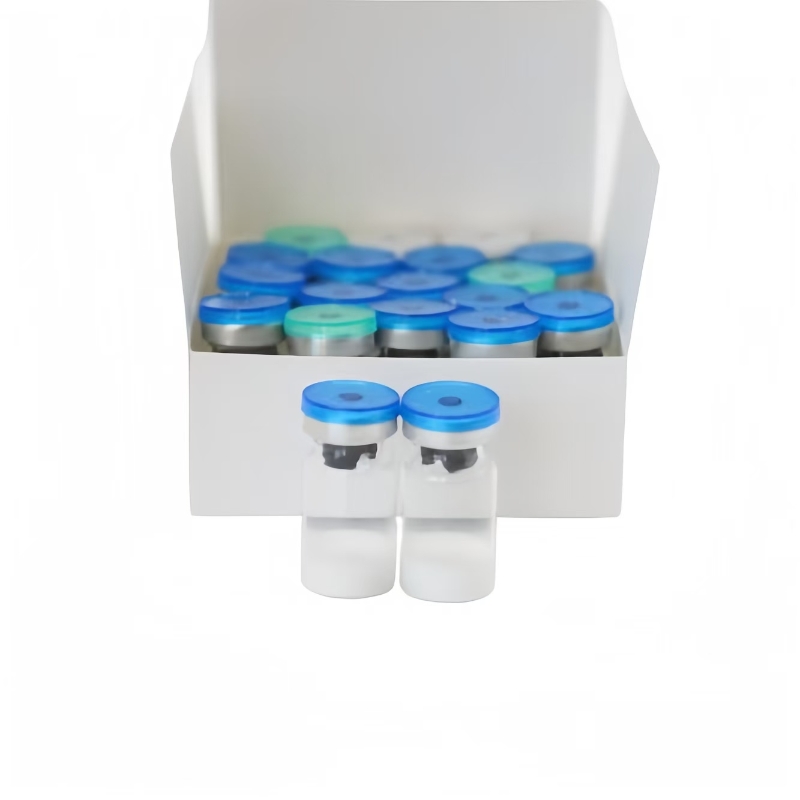3-5 heavy-duty varieties with more than $1 billion are listed, and 20% of the sales come from overseas! "Golden decade" of innovative medicine?
-
Last Update: 2018-06-15
-
Source: Internet
-
Author: User
Search more information of high quality chemicals, good prices and reliable suppliers, visit
www.echemi.com
In the next decade, China will generate 1-2 first in class new drugs every year, and 3-5 heavy-duty bomb varieties with global sales volume of more than US $1 billion will appear in the next decade And 20% of innovative drug sales will come from overseas market On June 13, Geli pharmaceutical officially announced that its new anti hepatitis C Class 1 drug, gonovi, had been approved by the State Food and Drug Administration for listing If you look carefully, since 2018, several promising innovative drugs, such as aikonin (ibovetai for injection), Zhengda Tianqing's independent research and development of anti-tumor class 1 new drug, enrotinib hydrochloride capsule, and thipeferistine injection, have been on the market Compared with the past, the performance in the first half of this year gives the industry a sense that Chinese innovative drugs are breaking out Analysts at CICC securities believe that in the next decade, China will be upgraded from a big country of generic drugs to a powerful country of innovative drugs By 2030, based on the "new active ingredients" developed, China's contribution to global pharmaceutical innovation will increase from 2% to 12% and enter the second echelon of the world; the proportion of Chinese enterprises in global pharmaceutical research and development will increase from 5% to 20%, surpassing the UK and ranking second in the world From the perspective of achievements, in the next decade, China will produce 1-2 first in class new drugs every year, and in the next decade, there will be 3-5 heavy-duty bomb varieties with global sales of more than $1 billion And 20% of innovative drug sales will come from overseas market Why does CICC come to this conclusion? Has China's innovative medicine really risen? Who will become the historical creator of Chinese innovative medicine entering the world? When the report "cancer immunity, hope to cure cancer" was released in 2014, China was still a blank in this field But now, the number of car-t under research in China is second only to that in the United States, ranking second in the world Three local PD-1 have submitted new drug applications, and will compete with the global pioneer, optivo / keytruda China's rapid pursuit of tumor immunity epitomizes the progress and upgrading of the entire pharmaceutical industry 487 clinical trials of biological drugs are under way, ranking the third in the world The number of clinical trials for class I biological products increased sharply from 5 in 2012 to 36 in 2017, while the number of clinical trials for class I chemical drugs increased from 17 to 98 in the same period New drug research and development is being internationalized One quarter of the 2 / 3 phase clinical innovative drugs were also tested overseas New drugs under research in China are being recognized by international peers There are more and more cases of foreign companies introducing overseas rights and interests of Chinese pharmaceutical companies in independent research and development of innovative drugs, and the transaction scale is growing Last year, there were more than three billion US dollar outward licensing transactions (Baiji Shenzhou, Nanjing legend and Yuheng pharmaceutical) The R & D intensity of leading enterprises has increased rapidly, and the product echelon has evolved from me to me better and me best In terms of global innovation pattern, measured by the number of pre market R & D and new drug launches, China is currently in the third tier, contributing about 2% to global innovation, which is still far behind the first tier countries of the United States (about 60%) and the second tier countries (Japan, South Korea and Western Europe) However, by 2030, based on the new active substance (NAS) developed, China's contribution to global pharmaceutical innovation will increase from 2% at present to 12%, ranking the second or even the first echelon If we say that the next 10 years will be the "golden decade" of China's innovative medicine, it is because at present, China's innovation has initially possessed the favorable conditions of time, land and people China's huge population base provides rich clinical resources With the fashion, a large number of clinical medical needs are not fully met, which will provide a huge home market for innovative drugs China's population of liver cancer, esophageal cancer and gastric cancer accounts for 50% / 49% / 43% of the world The overall five-year survival rate of cancer in China is only 40.5% (2012-2015), far lower than 66% in the United States Frost & Sullivan predicted that the scale of China's biopharmaceutical market would increase by 16.4% annually to 327 billion yuan in 2021, the fastest growth rate in the world, which would account for 17% of the global biopharmaceutical market at that time Regulatory reform has been carried out in depth to inject strong impetus into pharmaceutical innovation Under the principle of encouraging innovation, the reformed drug review and approval mechanism redefines the concept of new drugs, gives priority to the review of innovative drugs urgently needed in clinical practice, establishes a communication and exchange system and an expert advisory committee system, which is professional, transparent and data-driven The time limit for approval of new drug clinical trials (ind) has been shortened from about 20 weeks to 30 working days, which is close to the US FDA standard China food and drug administration has joined the ICH (International Coordinating Committee for registration technology of human drugs), and the evaluation standards are connected with the international standards, which will greatly speed up the clinical trial process and promote international cooperation and transfer of innovative projects Outstanding talents have returned to China and become leaders in R & D, business development and investment and financing So far, the "Thousand Talents Program" has introduced about 8000 overseas talents, of which about 35% are medical / biological disciplines Chinese executives of multinational pharmaceutical companies have also changed jobs or left their jobs to start businesses They not only brought back the advanced management experience of the United States and Europe, but also brought back the know how of early research and development of innovative drugs to China, docking with China's rich clinical patient resources VC / PE investment has grown explosively, and the new rules of HKEx have supplemented the investment and financing ecosystem Last year, the amount and quantity of VC investment in China's pharmaceutical industry more than doubled compared with 2016 Market potential and innovation speed also attracted international investment institutions such as OrbiMed and Lilly fund to invest in innovative pharmaceutical enterprises in China The new listing system introduced by the Hong Kong Stock Exchange welcomes bio pharmaceutical companies with no income, which just complements the lack of innovative pharmaceutical investment and financing ecosystem In the United States, after entering the second phase of clinical trials, the original research drug start-ups usually need IPO or acquisition by large companies to obtain funds for further development 97% of U.S biopharmaceutical IPOs are in the R & D stage, and 55% are in clinical phase II 2 breakthrough point of Chinese pharmaceutical enterprises in the next 10 years In the next 10 years, the field of tumor immunity of Chinese pharmaceutical enterprises will be an important direction, and also a field that is likely to be synchronized with the world Tumor immunity is the largest field in the research and development of biological drugs It has become a paradigm innovation in the field of tumor treatment after surgery, chemotherapy, radiotherapy and targeted treatment, and is regarded as the most potential means to cure malignant tumors At present, five PD-1 / PD-L1 drugs and two car-t drugs are on the market worldwide The global market peak of PD-1 / L1 is expected to reach 40.7 billion US dollars, and the Chinese market peak is expected to reach 43.2 billion RMB Car-t has an international market space of 9.3 billion US dollars and a domestic market space of 11.1 billion RMB CICC expects that in the future, more new drugs, new therapies and new indications will be approved, new research areas will make breakthroughs, and the market pattern will be rapidly evolving At present, tumor immunity has been approved in 17 cancer diseases, and lung cancer and other major diseases have been approved as the first-line treatment In the future, we should pay attention to the changes of the first-line lung cancer market pattern, the progress of PD-1 / L1 combination therapy, other car-t targets, general car-t, TCR application in solid tumors and so on In May 2017, keytruda was first approved by FDA for the first-line treatment of non-small cell lung cancer with high expression of PD-L1, showing a strong growth in 2017 We believe that with the advantage of lung cancer as the biggest indication, keytruda is expected to surpass opdivo as the best-selling PD-1 drug In local PD-1 / L1, Junshi biology, Hengrui medicine, Baiji Shenzhou and Xinda biology are in the first tier It is estimated that six companies, namely Bristol Myers, Merck, Hengrui, Baiji, Junshi and Xinda, will account for 84% of the market share Although the side effects of Hengrui are higher than those of other competitors according to the experimental data disclosed at present, it is still expected to occupy ~ 30% of the market share of China China is second only to the United States in 209 cell therapies, especially in 152 research car-t Among them, 128 cell therapies are owned or supported by research institutions, accounting for 61%, higher than 23% in the United States There are also a number of domestic enterprise car-t R & D projects pushed to the clinical stage, leading by ucadi, Kingsley, sibyman, Keji biology, bosengi, etc.; in addition to the traditional car-t cells for blood tumors, Keji biology for the treatment of liver cell cancer, and bosengi for the development of car-nk technology are also quite unique In addition to the breakthrough in the field of cancer in China in the next decade, hepatitis B is also a major direction Because of the huge potential of the Chinese market, it will become the driving force for Chinese pharmaceutical companies to invest heavily in R & D More than 325 million people are infected with hepatitis B or C globally, and about 1.34 million people die each year The number of chronic hepatitis B virus carriers in China has reached about 120 million There are 30 million chronic hepatitis B patients Only 2 million people have been treated, less than 1 / 10 of the total In the next decade, China will still be the largest market for hepatitis B It is estimated that by 2020, the market scale of hepatitis B drugs in China will reach 20 billion yuan, and 30 billion yuan in the long term However, unlike hepatitis C, which can be completely cured by Gilead's sovaldi, hepatitis B still lacks effective drugs around the world Currently, standard treatment is only effective for 5% of hepatitis B patients New hepatitis C drugs under research include siRNA, TDA precursor, entry inhibitor, capsid inhibitor, antisense RNA, gene editing, etc In addition, local pharmaceutical companies are expected to produce more local original research and drug start-ups in the field of Alzheimer's disease The incidence rate of Alzheimer's disease is increasing rapidly with the aging of the population Currently, there are more than 40 million patients worldwide, and it may increase to 100 million by 2050 However, the cause of Alzheimer's disease is not clear, and there are no effective drugs to slow down the process of disease The failure rate of clinical trials of drugs for Alzheimer's disease is more than 99% The research and development of drugs for Alzheimer's disease is one of the most challenging topics in the medical field China has an estimated 10 million Alzheimer's patients, the largest number in the world, and an average of 300000 new cases every year At present, 11 ongoing clinical trials are registered on clinicaltrials.gov, operated by local pharmaceutical companies and multinational companies such as Lilly Huge clinical needs and concerns of VC/PE institutions will enable local innovators to challenge this area The protection of intellectual property rights is the key element of pharmaceutical innovation ecology Due to the characteristics of high investment, high risk and long cycle of innovative drug research and development, intellectual property protection is particularly important for the sustainable development of the pharmaceutical industry For the original research drug enterprises, reasonable and effective intellectual property protection provides the original research drug with a certain period of market monopoly right, and ensures that the original research drug obtains a reasonable return relative to its R & D investment In addition, the perfect protection of intellectual property rights can balance the conflict of interest between generic drugs and original research drugs and make them develop in a balanced way It can not only ensure that the public continues to get new treatment methods, but also improve the accessibility of drugs through the listing of generic drugs Improve the evaluation, pricing and payment ability of payment system for innovative drugs At present, there are still significant defects in the price formation mechanism and reimbursement system of innovative drugs in China For this reason, the sales volume of new drugs in the first five years after their launch in China is 1 / 6 of that in Japan and 1 / 30 of that in the United States The payment systems of major developed countries can be reimbursed for innovative drugs, and the reimbursement qualification and listing approval are basically synchronous British nice and other health technologies
This article is an English version of an article which is originally in the Chinese language on echemi.com and is provided for information purposes only.
This website makes no representation or warranty of any kind, either expressed or implied, as to the accuracy, completeness ownership or reliability of
the article or any translations thereof. If you have any concerns or complaints relating to the article, please send an email, providing a detailed
description of the concern or complaint, to
service@echemi.com. A staff member will contact you within 5 working days. Once verified, infringing content
will be removed immediately.







